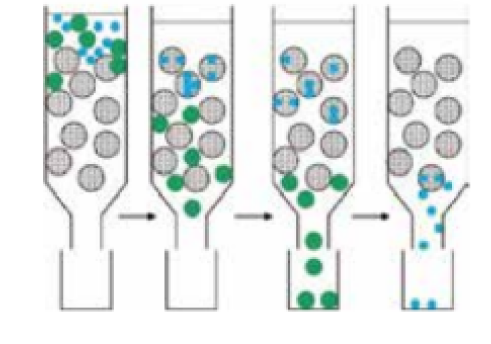Size exclusion resins are based on the size of the target molecules, from the largest to the smallest peak in order to achieve the purpose of separation.
Size exclusion resins are often used in the subsequent purification stage with less impurities.
Size exclusion resins are used for the purification of smaller samples.
In group separation (such as desalination) can also be used in the coarse purification stage.
The addition of 150 mM NaCl to the buffer can effectively reduce the non-specific adsorption of the target protein.

Ion exchange resins is one of the most widely used methods for protein separation and purification. Different proteins have different isoelectric points, different molecular sizes, different charge density distributions in the same mobile phase, different charge amounts, different binding strengths to ion exchange resin with opposite charges, and different retention times when eluting in the mobile phase, thus allowing separation.
VDO supplies 6 types of ligands, which are DEAE, CM, Q, SP, Focurose FF, Focurose HF and Focurose HPR , which are a combination of 3 substrates and a variety of ion exchange resin to precisely match the downstream technology of bioprocesses.

Hydrophobic interaction resins separates proteins based on differences in hydrophobicity, i.e., based on reversible interactions between proteins and hydrophobic groups on the surface of hydrophobic interaction resins.
Hydrophobicity isenhanced at high ionic strengths and therefore binding in a high ionic strength environment is usually eluted by reducing the ionic strength. The unique adsorption separation mode makes hydrophobic interaction resins an ideal purification method after ammonium sulfate chromatography or after ion exchange high salt elution.
Affinity resins were established and developed based on the principle of specific adsorption between biomolecules and other ligand molecules (e.g. antigen and antibody, enzyme and substrate, hormone and receptor, complementary chain in nucleicacid, polysaccharide and protein complex, etc.). The purification of target molecules is achieved by specific adsorption between the ligand on the medium and the target molecule. Due to this specific force, affinity resins are characterized by high selectivity and high activity recovery.

Please fill in the order form and we will contact you within 2 working days.